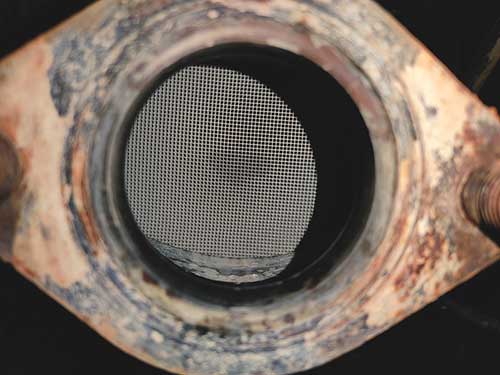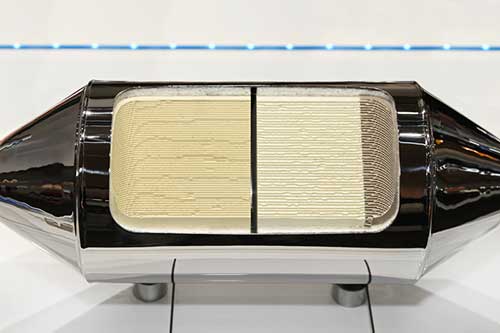Thieves targeting car parts can make your life difficult. Do you imagine waking up to a stolen catalytic converter? Unfortunately, catalytic converter theft has increased so much over the years, and there is an increased likelihood of experiencing the robbery.
Some cars are likely to fall under the arms of catalytic converter thieves. It is easy to access the catalytic converter with an angle grinder that cuts deep into the metal, and with a strong tug, the thief will take the catalytic converter off.
Cars with the most catalytic converter thefts have converters with essential minerals sought in the market. For instance, the Toyota Priuses and Hondas are some of the cars which thieves highly target for their catalytic converters. These cars are hybrids, and they use the catalysts less, making the metal inside more valuable.

Catalysts thieves only take a few minutes to remove the catalytic converters, and car owners pay the price as it may take a few weeks to repair the converter.
Contents
Why have Catalytic Converter Thefts Increased So Much over the Years?
The catalytic converter filters the harmful toxins released from the burning fuels of vehicles. One of the most important parts inside that helps is palladium, a precious metal. Unfortunately, this metal is rare, and its prices have skyrocketed over time.
By 2018 the price was about $1000 an ounce, and at the moment its costs $3000, and the increment does not seem to stop. It has become more valuable than gold and thus attracts thieves.
Palladium is used to line the catalytic converter and safely convert harmful emissions like nitrous oxide and carbon monoxide into less harmful elements related to the atmosphere. Palladium is very effective in combating emissions and thus is a perfect target for thieves.

However, not all cars release the same amount of emissions. The thieves most target car types such as Toyota Prius and Mercedes have fewer emissions, and the palladium will remain relatively new over time.
Environmental organizations require manufacturing companies to reduce emissions, which is a catalyst for global warming. However, since the mineral is scarce, thieves steal it from cars that do not overuse the catalytic converter on the exhaust system.
The thieves would remove the palladium lining on the exhaust and sell it to unsuspecting buyers. Moreover, the recyclers gladly accept palladium from buyers as the chemical engineering is complicated, making palladium very valuable.
What Cars Are Targeted For Catalytic Converter Theft In The US?
Cars built after 1974 have catalytic converters, and most thieves would harvest them from unsuspecting owners. However, cars such as Toyota Tundra, Toyota Prius, Toyota Tacoma, Ford F-250, and Honda Element & CRV are the most common vehicles thieves target in the US.
Although catalytic converter thefts happen at night, thieves can steal them during the day in crowded parking lots with noise covering the removal process.
What Cars Are Targeted for Catalytic Converter Theft in the UK?
In the UK, Toyota and Honda cars are at risk of catalytic converter theft as they have the most significant portions of hybrid cars, which are likely to preserve the converters.
Toyota Prius, Toyota Auris, and Honda Jazz are the highly sought cars by catalytic converter thieves due to the high concentration of the mineral on the converter.
Wha Cars Are Targeted For Catalytic Converter Theft in Australia?
The Toyota Prius, Mercedes Benz, and different Honda vehicles are the most targeted car in Australia by the thieves as low-emission vehicles.
The Prius converters contain more significant Palladium, Rhodium, and Platinum, which are rare and expensive. Thieves can fetch so much money from the illegal sale of catalytic converter parts.
What to Do When Your Catalytic Converter Is Stolen?
When your catalytic converter is stolen, you can alert the authorities. They might open an investigation against the thieves as it is likely for the thieves to target other vehicles within the area.
You should not move the car immediately after you recognize the catalytic converter has been stolen. Instead, you can wait for the helpful police report when making claims with the insurance company.
Comprehensive coverage is a higher level of coverage and would cover the stolen catalytic converters. However, if you don’t have comprehensive coverage, you may pay the difference.
How Can You Prevent Catalytic Converter Theft?
Thieves prefer stealing catalytic converters from vehicles that are raised off the ground, and you might be a victim of stolen converters if you leave the car in crowded places for an extended time.
However, you can avoid thieves if you park in busy, well-lit areas in the parking lot as the thieves would avoid stealing in places where they quickly get exposed.
You can engrave the VIN or license plate number into the converter for ease of tracing it. Most thieves might not think about examining the engraved symbols, but with the help of the police and detectives, you can find the catalytic converter easily.
If you want to leave the car for an extended period, you can leave the car in a locked garage where it is difficult for thieves to access it.
Again, you can install the video surveillance outside your home as thieve are likely to steal the converters at night when you are sleeping. Moreover, you can weld a catalytic converter to the car’s frame at the mechanic shop or install an anti-theft device.
Finally, you can install a sensitive alarm on your vehicle, as the alarm would go off as soon as thieves start removing the catalytic converter from your car.
Final Thoughts
Cars manufactured after 1974 mostly have catalytic converters, but hybrid vehicles like Toyota Prius, Mercedes, and Honda are prone to catalytic converters theft. The vehicles are at risk of thieves as they do not overuse the converters.
The catalytic converters have precious metals like palladium, whose price has been increasing over time. Palladium is rare, and thieves steal this essential part of the vehicle and sell it on the black market.
However, you can prevent catalytic theft by parking in well-lit areas and installing tracking devices on the conservators, making it easy to track it if stolen.
